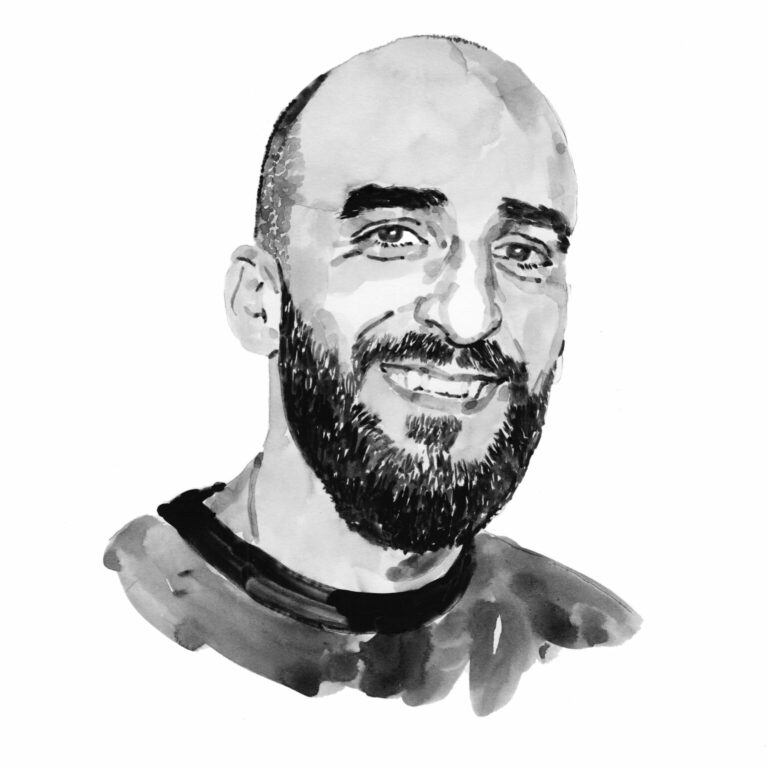Diego Martin Vazquez

Who I am
I grew up in Barker and Villa Cacique, two small towns in the south of Argentina’s Buenos Aires province. The picturesque landscapes and imposing mountain ranges of these places drew me to the enchantment of nature from an early age. My family and I often explored rural paths and climbed hills that offered breathtaking views, journeys that enabled me to spend delightful days learning about flora and fauna. During family vacations to the beach, I became captivated by the sight of fishing boats unloading sharks and rays. These creatures always intrigued me and I envisaged a future working in an aquatic environment. However, it wasn’t until university that elasmobranchs truly captured my heart. When I finished my undergraduate studies in biological sciences, I had the opportunity to embark on a seven-day scientific cruise dedicated to studying marine sharks and rays. This experience solidified my commitment to dedicating my life to the study of these remarkable creatures. Throughout my doctoral studies at the Universidad Nacional de Mar del Plata in Argentina, I focused on studying the reproduction of elasmobranch marine species. This led to frequent days-long cruises in the South Atlantic Ocean. Currently, my postdoctoral research focuses on the freshwater stingrays of the Potamotrygonidae family in South America. The biological knowledge within this group is limited compared to that available for other marine species, presenting a challenge for our team. My research delves into understanding biogeographic patterns and how they can be applied to the conservation of freshwater stingrays. I am profoundly committed to developing effective tools and strategies that foster their conservation. Through this project, I aspire to provide valuable biological insights into one of the most emblematic freshwater stingray species. This endeavour seeks to integrate the perspectives and knowledge of scientists, fishers, fisheries management authorities and river communities.
Where I work
I have recently joined the National Institute of Limnology, where I am part of a rapidly growing team dedicated to the ecology and conservation of freshwater stingrays. This institute is located in the city of Santa Fe, Argentina, on the banks of the middle Paraná River. The Paraná River is one of the world’s most significant rivers, ranking as the second longest in South America after the Amazon. It traverses parts of Brazil, Paraguay and Argentina, serving as a crucial waterway that provides access to the ocean for the inland cities of Argentina and Paraguay. It represents a vital resource for communities residing along its banks, where fishing often serves as a primary source of income and sustenance. Simultaneously, recreational fishing occurs both in the main river channel and in associated lagoons, attracting visitors from around the globe who seek dorados, sorubims and giant stingrays, among other fish. The climate along the river’s path ranges from subtropical in the north to temperate-humid in the south, with less rainfall. Hydrological patterns are critical factors in these environments and are closely linked to the reproduction of several fish species. The Paraná River, like other tropical and subtropical floodplain rivers, is increasingly impacted by land reclamation, deforestation, pollution and infrastructure development such as dams. Through this project, our goal is to generate information concerning one of the most iconic fish species of the Paraná River, the giant freshwater stingray. Ultimately, we aim to contribute to establishing effective fisheries management based on scientific data, thus enhancing its conservation.
What I do
We will study the movement patterns of giant freshwater stingrays throughout the middle and lower Paraná River in Argentina. My work often involves collaborating with local fishers and training them to assist in stingray tagging. Once caught, stingrays are measured and sexed before being fitted with a small dart tag. They are released back into the water and the GPS location and the habitat type are recorded. We expect to collect information about the types of habitat the stingrays use, how this use differs with season and stingray size, and the extent of individual stingrays’ movements. To ensure the success of the tagging project, we’ve teamed up with a group of dedicated fishers who are equally passionate about this study. They will be marking stingrays during the species’ active season, from October to April. We will recruit new collaborators and celebrate reports of recaptured individuals through the project’s Instagram account. We believe that engaging with fishers and river communities is crucial, not only for the project’s progress but also for raising awareness about elasmobranch conservation. For this, we will present talks highlighting the importance of our work to the general public. Our collaboration with regional aquariums offers us a platform to disseminate our message. We are proud participants in public outreach events like Science Week, which provide fantastic opportunities to connect with students, sharing our findings and raising awareness about the implications of our work. Lastly, we will provide reports to both national and provincial fisheries management authorities, with whom we maintain strong connections, to communicate project findings and promote sustainable fishery practices. In essence, my days are a dynamic blend of scientific research, community engagement and educational outreach, all centred on protecting the remarkable giant freshwater stingrays of the Paraná River.
